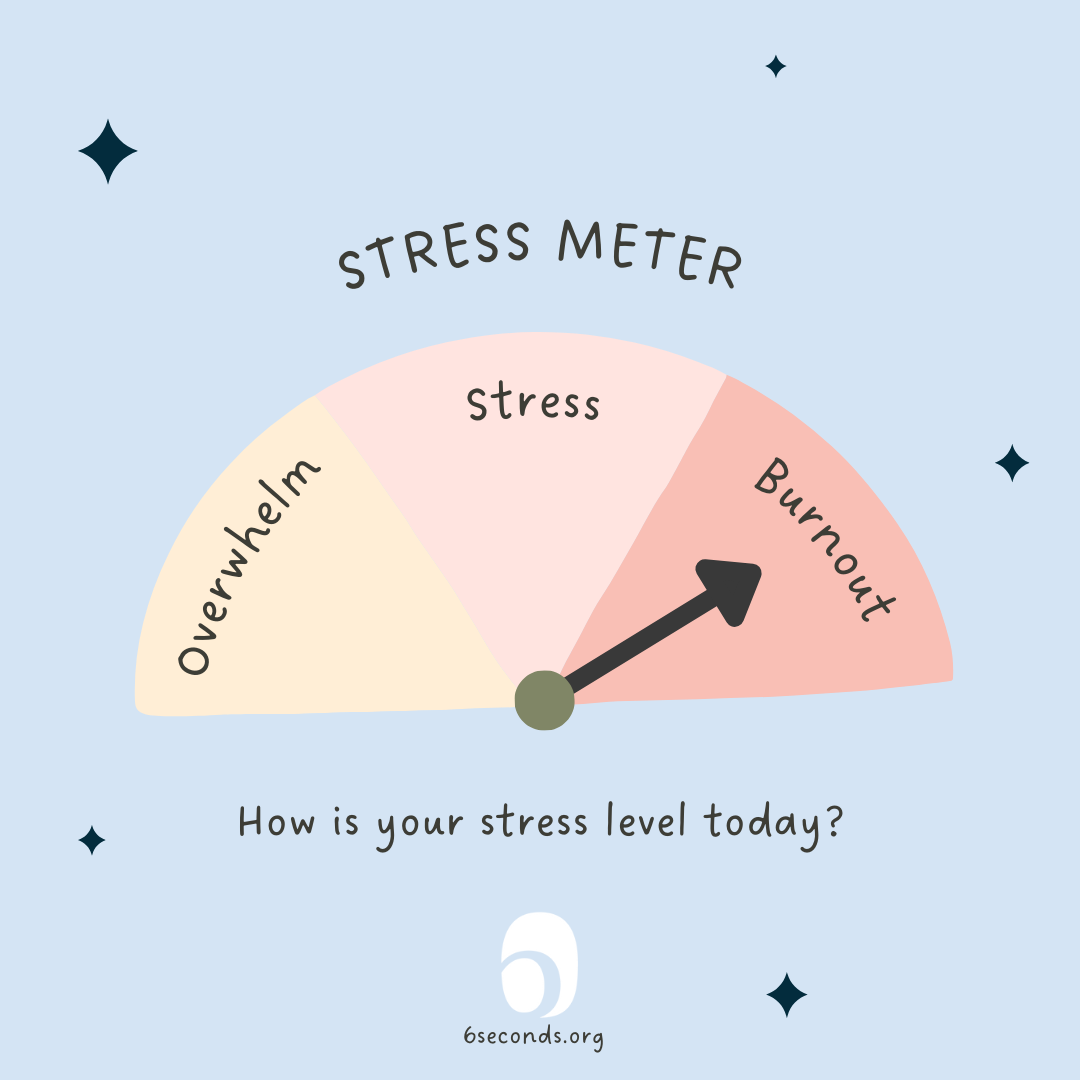As people become more volatile around us, our brains’ natural response is to also become more reactive. Coaching provides a perfect opportunity to step out of this cycle of escalation, but it’s a difficult emotional puzzle; here’s a map of the process with three emotional intelligence tips for coaches.
Coaching Down the Escalator: 3 Emotional Intelligence Tips for Coaches to Reduce Volatility & De-escalate Conflict in a Polarized World
🌱
Does it seem the world is less safe and stable than even a few years ago? Do you feel a growing ‘wobble’ of uncertainty fueling polarization? Perhaps it seems ‘everything’ is a source of conflict – and that a small disagreement can quickly escalate out of hand. You’re not imagining it:
Next month you’ll see that, alarmingly, the 2024 State of the Heart research report will show that world is continuing on a path toward increased volatility. Download the 2023 report here, and you’ll get the 2024 report as soon as it’s available.
One of invaluable competencies in the Six Seconds Emotional Intelligence Model is called Navigate Emotions. It’s the capacity to proactively engage emotions – and it’s the antidote to volatility. Global research from a randomized sampling from hundreds of thousands of people in over 140 countries, the world is getting worse at this skill.
This means on average, we are less able to handle challenging feelings. We’re more likely to move into a reactive start, more quickly. This means that we, as coaches, and our clients, are more likely to escalate, more quickly.
The Reaction Cycle helps clarify this dynamic, and offers opportunities for coaches and clients to exit the cycle – and shift toward balance.

The Neuroscience of Reactivity: Mind-Body Connection
To understand what I mean by “escalate,” I turn to pioneering stress science from Dr. Herbert Benson, who I was fortunate enough to interview at our EQ conference at Harvard.
A pioneer in mind-body health, Dr. Benson was a strong, early advocate that emotions are a key component of health. He studied the effects of stress on heart health, and founded the Mind/Body Medical Institute at Harvard Medical School. Benson described two states:
- The stress response is an escalating reaction where we move into increasing levels of volatility.
- The relaxation response is a calming path where we reduce volatility.
These are marked by physiological changes such as cortisol levels, heart rate and heart regularity, blood flow, and, ultimately, heart attacks.
You can use this free online tool to visualize React vs Respond. In coaching, I use it when clients are seeking to understand what pushes them into each category.
This article is from the 🌱 Emotional Intelligence Coach Newsletter
Click here & choose the newsletters that will help you practice and grow emotional intelligence
The Reaction Roadmap: A Coaching Tool for De Escalation
In the Emotional Intelligence Practitioner Certification – which is part of the EQ Coach Certification – we utilize a model that I developed called the Reaction Roadmap. It’s a way of understanding the process of reaction, and how reactivity fuels reactivity.
In our video, Why Am I So Angry All the Time, the most popular video on Six Seconds’ channel, I explain the three stages of a reaction.
Each stage of the reaction fuels the next stage:
Set-up is where we are creating the pre-conditions for the reaction, such as not sleeping enough. This leads us to interpret a new stimulus as a trigger.
Interpretation is where we assess the trigger as a threat. Distress means we perceive a problem to be bigger than our resources. This leads us to move into reaction and start the escalation.
Escalation is the neurobiological process where the cascade of emotion-chemicals floods our bodies & brains, which then leads to being “even more set up” for further reactivity.

Three Coaching Questions to Shift from React to Respond
While there’s a great deal to unpack around the factors that drive us to go up the reaction escalator, today we’ll focus on moving back down toward a state of balance. Just as each of the three steps above can fuel greater reactivity, each step is also an opportunity.

Set Up: Prevention
It’s easy to notice we’re “in reaction” after we’ve gone through the cycle a bunch of times and we’re in a full on come-apart moment. What if we could notice for ourselves, and help our coaching clients notice, much earlier?
The ‘set up’ phase is where we put ourselves into a condition that increases the likelihood of a stress reaction. For example: not sleeping enough, eating poorly, unhealthy routines & relationships, doom scrolling. So the obvious answer is: Don’t do that. If only it were so easy!
The opportunity in this phase is early detection. Can we become better at noticing subtle clues that we’re setting ourselves up? These could be emotional, physical, mental or other signals, such as:
Physical: Shallow breathing
Emotional: Impatient with small obstacles
Mental: Over thinking about a relatively small issue
When we get better at noticing the clues early, it’s easier for us to then shift out of the set-up so we can handle incoming stressors more gracefully. This is ideal, because it lets us skip the whole mess of the reaction.
In coaching, after you’ve contracted with the client to explore their stress reaction, you can ask if they’d like to try making a timeline of the minutes, hours or days before the reaction.
Invite them to use their imagination to go back in time and tell you what it was like for them: What were some emotions, physical sensations, thoughts you were having before the reaction?
What about a few hours before that?
And before that?
Then, explore: In your timeline, what clues can you find that were setting up for this reaction? How might you use some of those clues as signals to help you do something different next time?

Interpretation: Rehearsal
The interpretation stage of the process is often very fast – it takes as little as 1/4th of a second for your brain to begin interpreting a stimulus as a threat, and then another 1/4-second for your body to begin the cascade of reactions we call the stress response.
Given the speed, it’s tough to intervene at that very moment. However, we can prepare and practice so we can use that 1/4-second more effectively. As a coach, you probably already do this with your clients: It’s about considering alternate interpretations.
After contracting to discuss this reaction, the first and hardest part is to clarify the original interpretation. You might start with an overview, eg, “Since you’ve said you want to explore this reaction, might it be helpful to walk through what happend step-by-step?”
At some point in explaining what happened, your client is likely to use a phrase that indicates an interpretation of the situation, such as, “I knew” or “it seemed like” or “you could tell that…” For example: “When she said I wasn’t doing a good job, I knew she was really mad at me.”
Notice the interpretation and ask for clarification: “I think I heard you say there was a moment when you knew she was mad. Could you tell me a little more about how you came to that conclusion?” Later, you might ask: “Were there any assumptions you were making as you came to that conclusion?”
Remember, the client might be absolutely correct in their interpretation, and yet, it might still be an interpretation.
If the client is willing and able to acknowledge they were making an interpretation of the situation, you can go to the next phase of exploring alternative interpretations. For example, asking: “Sometimes it’s helpful to consider several different possible interpretations of the situations, would you like to try that?”
Finally, you can go to experimentation: “Is there one of these alternative interpretations you’d like to try out next time?” If yes, “Would you like to practice that right now?” If yes, invite your client to imagine being in a similar situation, and talk through their new way of interpreting.

Escalation: Pause
If we’re going to continue in the reaction cycle, we escalate the initial reaction. While sometimes that’s intentional, usually it happens unconsciously. We produce more and more of a particular neurohormone. In turn, these signal other cells to multiply the effect into a cascade of neurobiological escalation.
Remember that each of these emotion chemicals lasts for up to around six seconds… so a six second pause can disrupt the cascade and create a space to move out of the reaction cycle.
In coaching, you can practice this pause with your client. Invite them to plan ahead to how they’ll take their pause (ideally activating high-order thinking for six seconds). Then they can practice by triggering a little bit of stress reaction by remembering an incident, and then trying out the pause. Like any new practice, it takes awhile to make it automatic and smooth, so it’s more effective to practice on small reactions rather than waiting for big messy moments.
If you try these tips yourself, or in coaching, please come back and drop a comment to share your advice with all of us.
And, if you have questions you’d like me to explore in a future 🌱 EQ Coaching newsletter and/or video, please post in the comments, or feel free to reach out to me via our contact form.
… and don’t forget to Click here to subscribe to the EQ Coach Newsletter.
Whether you’re a professional coach, or contemplating earning certification as a professional emotional intelligence coach*, or you’re someone who uses coaching techniques to support others: of course these questions apply to us first.
* Did you know? In addition to top-level accreditation from the International Coaching Federation, the EQ Coach Certification is one of a handful of coaching certifications in North America that also provides master’s level credit? You’ll earn almost ⅓ of your MBA or MA in this program.
For more on EQ and Coaching 🌱, I recommend:
Neuroscience ‘tricks’ for change
- Emotions As a Motivation Supercharger: 3 Essential Questions to Feel Motivated - July 7, 2025
- The Motivation Iceberg: 3 Tips to Unleash Motivation - June 28, 2025
- How to Control Emotions Without Shutting Them Down: A 3-Step Process That Actually Works, and the Neuroscience Behind the Technique - June 15, 2025

